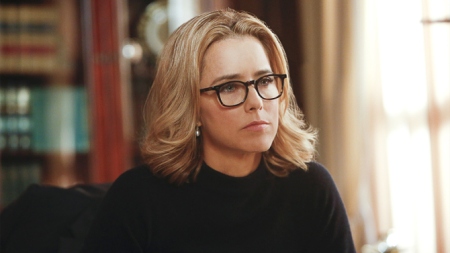Film review of “The Front Runner”, by Don Perlgut, for AJN 31 January 2019
Directed by Jason Reitman; written by Matt Bai, Jason Reitman and Jay Carson; starring Hugh Jackman, Vera Farmiga, J. K. Simmons and Alfred Molina
****
“The Front Runner” tells the true story of the 1988 Kennedy-esque US Presidential candidate, Colorado Senator Gary Hart (played by Australia’s Hugh Jackman), whose campaign – he was the Democratic front runner for the nomination at the time – was overwhelmed by the story of an extramarital affair. This was the first time that tabloid journalism and political journalism merged, changing the nature of US national politics and celebrity. The sordid nature of that event seems quaint by comparison with subsequent sexual escapades by Bill Clinton and Donald J. Trump. The implicit question that the film never answers is why did Hart’s candidacy fail, whereas Clinton and Trump (so far) prospered?
Although Senator Hart is now a footnote in history for all but the most ardent devotees of American politics, the film’s neatly written script successfully resonates with the current “Me Too Movement”. Here was a brilliant man and attractive politician who simply could not see that his playing around outside his marriage would have political, moral and personal consequences: “It’s not 1972, it’s not 1982,” one of his advisors tells him. “The public cares about this.” Despite his brilliance, Hart – the film implies – lacked empathy for the lives of the women he was with. The public judged him badly for this.
The film’s Jewish director Jason Reitman, son of director Ivan Reitman and grandson of Holocaust survivors, has established a stellar career of dramatising “of the moment” issues, from corporate human resource management (“Up in the Air”) to teenage pregnancy (“Juno”) to big tobacco (“Thank You for Smoking”).
Reitman does a great job with an outstanding cast that includes J.K. Simmons as Hart’s campaign manager, Vera Farmiga (Oscar-nominated for “Up in the Air”) giving a perfectly controlled turn as Hart’s wife Lee and Alfred Molina as “Washington Post” editor Ben Bradlee. Jackman – an excellent physical match for the good-looking Hart – provides a strong performance. But the most touching acting comes from Mamoudou Athie, who plays a fictional African-American “Post” journalist who acts as the film’s moral centre: his character’s scrupulously fair but firm pursuit of the truth in questioning Hart is truly memorable.
“The Front Runner” is based on the book “All the Truth Is Out: The Week Politics Went Tabloid”, written by Jewish journalist Matt Bai, who was once shamed by evangelical Christian and Republican Presidential candidate John Kasich into admitting that he had not gone to synagogue that week. A large number of Jewish actors appear in minor but memorable roles, including Kevin Pollak (who has played more than 20 Jewish movie characters) as an editor of the “Miami Herald”, Ari Graynor as a “Post” reporter, and Alex Karpovsky (“Girls”), Molly Ephraim and Josh Brener as campaign aides.
Although “The Front Runner” never reaches the heights of classics of the political bio-pic genre like “All the President’s Men” (Nixon) or “Primary Colors” (Clinton) or even the (currently screening) “Vice” (Dick Cheney), this film is a highly engaging, sharply directed and crisply edited slice of our current political and cultural moment. It neatly illustrates the engagement and co-dependency between the media and politicians.
When the head of CBS News said of the Trump campaign in 2016, that “it may not be good for America, but it’s damn good for CBS”, he captured something that screenwriter Matt Bai says began with Gary Hart: concern for a “tsunami of triviality” has helped the rise of Donald Trump. Hart foreshadowed this in his withdrawal statement that closes the film, paraphrasing his idol Thomas Jefferson: “I tremble for my country when I think we may in fact get the kind of leaders we deserve.”




 Posted by donperlgut
Posted by donperlgut 






